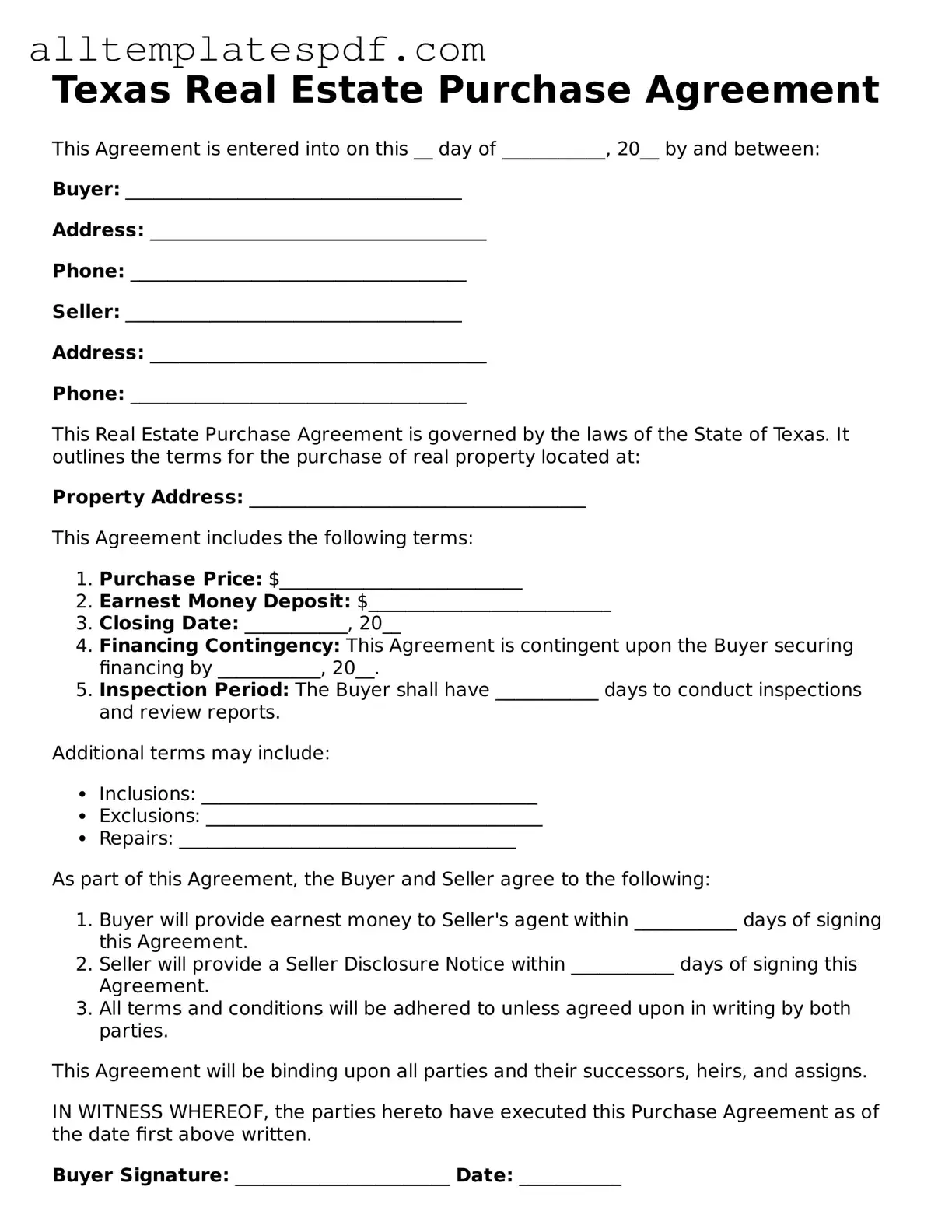Filling out the Texas Real Estate Purchase Agreement form can be a daunting task, and many individuals make mistakes that could lead to complications down the road. One common error is failing to include all necessary parties in the agreement. When buyers and sellers do not list all individuals involved in the transaction, it can create confusion and potential legal issues later. It’s crucial to ensure that every person with a stake in the property is properly identified.
Another frequent mistake involves overlooking the details of the property description. A vague or inaccurate description can lead to disputes about what is actually being sold. Buyers should take the time to ensure that the property is described with precision, including the address, legal description, and any relevant boundaries. This attention to detail helps avoid misunderstandings.
Many people also neglect to specify the purchase price clearly. While it may seem straightforward, failing to state the agreed-upon price or leaving it blank can create significant issues. Both parties need to agree on a specific amount to avoid ambiguity. Additionally, it is essential to clarify how the payment will be made, whether through financing, cash, or other means.
Inadequate attention to deadlines is another common pitfall. The agreement includes various timelines for inspections, appraisals, and closing dates. Missing these deadlines can jeopardize the transaction. Buyers and sellers should keep a close eye on these dates and ensure that all parties are aware of their responsibilities.
Many individuals also overlook the importance of contingencies. These are conditions that must be met for the sale to proceed. Common contingencies include financing, home inspections, and the sale of another property. Failing to include appropriate contingencies can leave one party vulnerable if the deal does not go as planned.
Furthermore, some people fail to consider the implications of earnest money. This deposit demonstrates a buyer's good faith and commitment to the purchase. However, if the amount is not specified or if the terms regarding its return are unclear, it can lead to disputes. It is vital to outline how much earnest money will be paid and under what conditions it can be forfeited or returned.
Buyers and sellers sometimes neglect to review the entire agreement thoroughly before signing. This oversight can result in misunderstandings or agreements to unfavorable terms. Each party should take the time to read and understand every clause in the contract, ensuring that they are comfortable with all aspects before proceeding.
Another mistake is failing to account for additional costs associated with the transaction. Closing costs, property taxes, and homeowners association fees can add up quickly. Parties should discuss and clarify who will be responsible for these expenses to avoid surprises later on.
Finally, not consulting with a qualified real estate professional can be a significant error. While it may seem tempting to navigate the process independently, the complexities of real estate transactions often require expert guidance. Engaging a real estate agent or attorney can provide valuable insights and help ensure that the agreement is completed accurately and legally.
